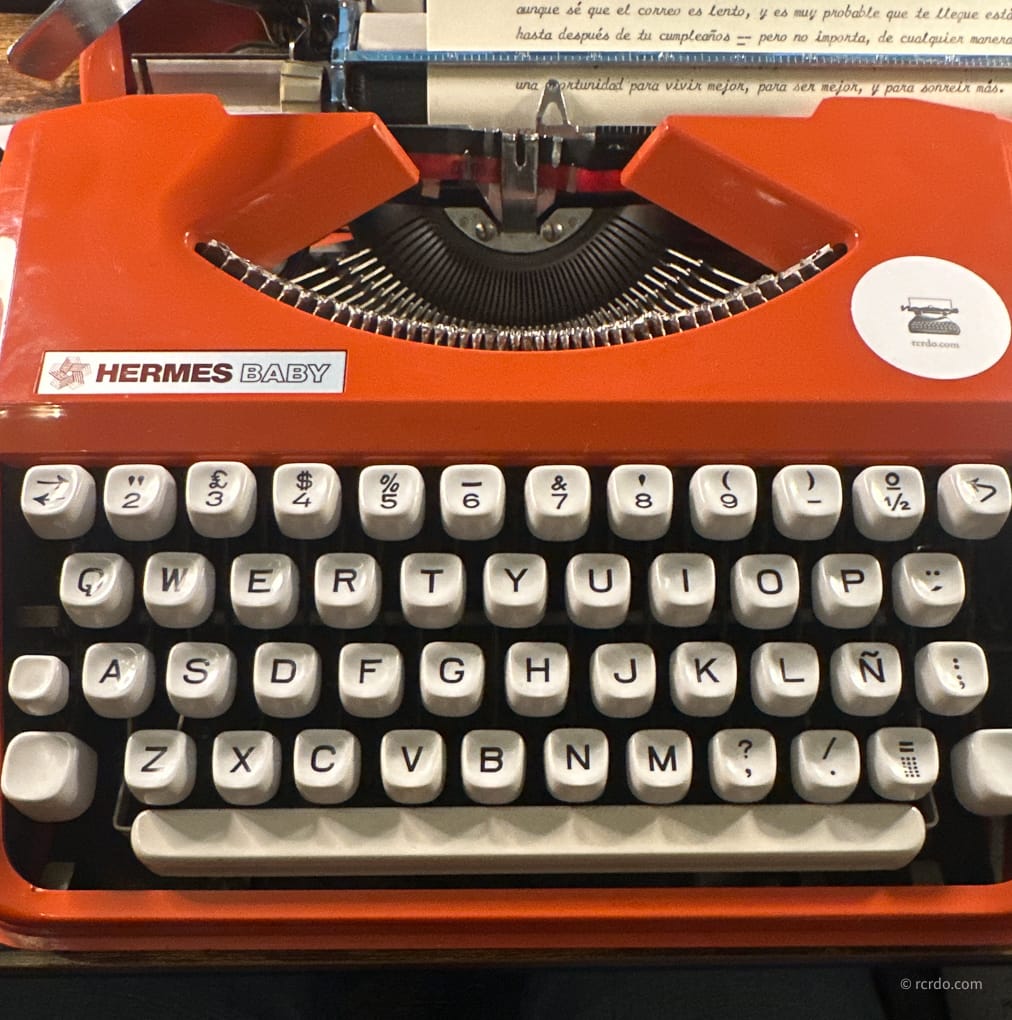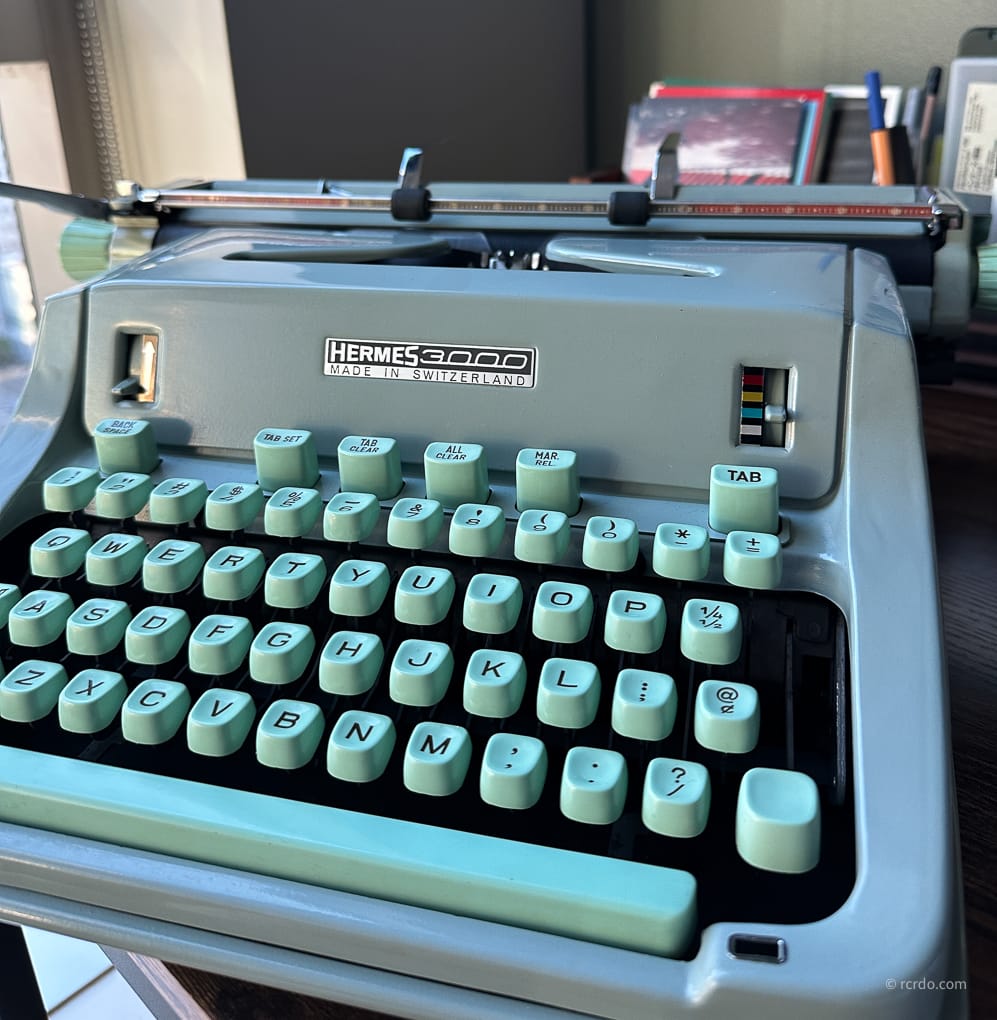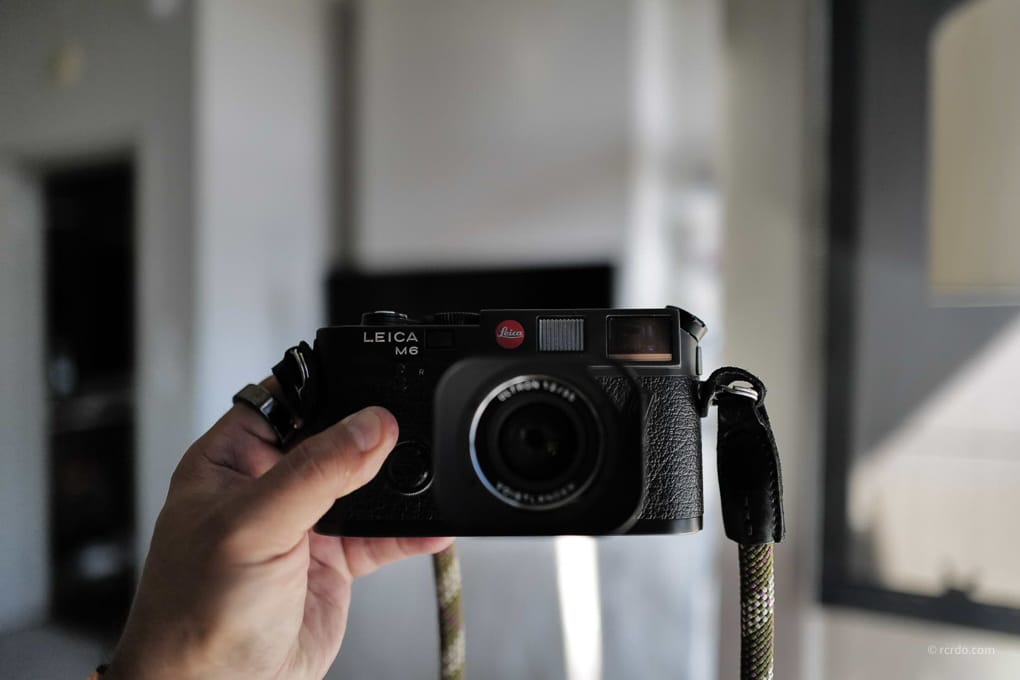Letters That Last: Why I Bought a Typewriter.

A New (Old) Tool
I bought a typewriter. It’s a bright red Hermes Baby with a Spanish key layout and a cursive font. It’s quite rare, and I’m very happy I found it. I’ve been wanting to get a typewriter with Spanish keys—I need the “ñ” and accents like “á”—so I can type letters to my family. My plan is to write them letters for their birthdays, or simply to say hello.
Where Do Our Digital Words Go?
I know we have more efficient ways to do this now, but my issue with digital communication is its impermanence. Let me explain what I mean.
My first email address was a Hotmail account. I used it for many years before switching to Gmail. The problem? I no longer have access to that Hotmail account. At some point, I was locked out of it, and despite many attempts, I’ve never been able to regain access.
In contrast, just yesterday, my wife showed me an envelope containing letters from my parents, siblings, and herself—from the 1990s. They’re in great shape, all still legible, and I don’t need anyone’s permission or password to read them.
When Tech Fails—and When It Doesn’t
In this example, new technology failed, while old tech remained accessible and reliable. The paper and ink on those letters are just as good as they were over 30 years ago.
Digital technology can be preserved, but the reality is that at some point, either the hardware or the software becomes obsolete or unusable. For example, how many of us can still read data from the floppy disks we used years ago? And how many written letters, books, or documents still exist from decades—even centuries—ago?
The Power of Analog
My new typewriter is old, but after a bit of cleaning and a fresh ribbon, it works perfectly. It’s from the 1970s, the newest in my small collection. I’m still surprised by how well these analog writing tools function after all these years.
Seriously, how many of you own a digital device that’s over 10 years old and still works flawlessly without any assistance? I don’t.
The only tech I own that’s over a decade—or even several decades—old and still works well is analog. And it makes sense: digital devices often fail due to aging batteries, faulty electronics, or unsupported software.
Built to Last
Analog tools don’t need electricity or batteries. They’re mechanical, made with sturdy materials and not cheap plastic like many modern gadgets. For example, my favorite typewriter is a Hermes 3000 from 1967, and it still works like new. One of my favorite cameras is a Leica M6 from the ’80s, and it performs reliably every time... no need to charge it. That’s impressive.


Hermes 3000 | Leica M6
Not Anti-Digital—Just Aware
Don’t get me wrong, I recognize the utility and advantages of digital tools. I spend most of my day in front of a modern laptop, using a sharp monitor, wireless keyboard and mouse. I carry a smartphone, and my favorite travel camera is a Leica Q2. I’m typing this on my laptop at a coffee shop, using Ulysses, a writing app I really enjoy.
I’m not anti-digital. But I do recognize its limitations—especially when it comes to power requirements and short life expectancy, much shorter than that of analog tools.
The Joy of Writing Letters Again
I wrote my first letter to one of my siblings the other day using my new typewriter. It was a genuinely enjoyable experience, to type with the awareness that I couldn’t edit anything without starting over. To know that every keystroke is printed directly onto paper, in real time, it's fascinating. It's both a writing tool and a printer, it combines two tools into one.
And the best part? No distractions. The typewriter can only be used for one thing: to type. It has no notifications, no screen, no grammar check. It’s just a solid, reliable tool that creates content that can last decades—so long as it’s kept away from water or fire.
Just You and the Words
My favorite part is knowing that in many years, if the paper survives, the only tool needed to read it will be your eyes. Nothing else. It's durable and it's simple.
Have a great weekend!




Comments ()